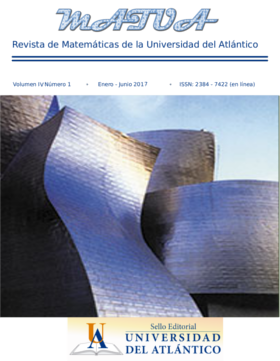Development of spatial thinking skills through the concepts of area and perimeter through the typological areas in children with visual impairment in an inclusive classroom
Abstract
The learner with visual impairment as a regular child also has an educational need with the difference that this is special. Which leads to the child in search of the apprehension of knowledge, are worth his remaining senses to replace their disability in one way or another, to thus offset their cognitive problem. For this reason, the inclusion is important improving factor. Nowadays we find foundations where children with such disabilities are treated as equals, using the theme of inclusion, which allows an equality where the child is comfortable. But, how can integrate without to include, or include without to integrate? Do you see this inclusion in the region?
With this perspective, a method and pedagogical strategies that behavior so that help the learner with visual impairments to understand how to solve problems of area and perimeter, so they develop spatial thinking, it is what is being sought. As a result, it is difficult to conceptualize the development of the skills of the learners with visual impairment, although they see reflex in the educational goals of the majority of institutional projects, mostly related to the good performance of mathematics.
The National Education Ministry (MEN), talks about some of the duty be institutions. Poses that inclusion means, then, serve with quality and relevance to the needs common and specific to this population present. As previously mentioned, "inclusion", is what you want to show in this work, therefore we want to innovate the educational process to let mark and motivation in the learners, contributing to the development of abilities of spatial thinking through tiflológicas areas.
Visitas al artículo
Downloads
References
Clements, D., & Battista, M. Geometry and spatial reasoning. Handbook of research on mathematics teaching and learning: A project of the National Council of Teachers of Mathematics., 1992.
Duval, R. Representation, vision and visualization cognitive functions in mathematical thinking. In: Proceedings of the Annual Meeting of the North American Chapter of the iternational Group for the Psychology of Mathematics . Handbook of research on mathematics teaching and learning: A
project of the National Council of Teachers of Mathematics., Education. 21st, Cuernavaca, Morelos, Mexico, October 23-26, 1999.
EDUCACIÓN INCLUSIVA, d. v. (17 de febreo de 2013). Educación inclusiva: personas con discapacidad visual. Obtenido de Educación inclusiva: personas con discapacidad visual.:
http ://www.ite.educacion.es/ formacion/materiales/129/cd/indice.htm
Gal, H., & Linchevski, L. To see or not to see: analyzing difficulties in geometry from the perspective of visual perception. Educational Studies in Mathematics, 74 (2) pp 163-18, 2010.
Gutiérrez, A. Tendencias actuales de investigación en geometrı́a y visualización. texto de la ponencia
invitada en el Encuentro de Investigación en Educación Matemática. TIEM-98. Centre de Recerca Matemàtica, Institut dÉstudis Catalans, Barcelona, 1998.
Hershkowitz, R. Psychological aspects of learninggeometry. Pearla Nesher, Jeremy Kilpatrick (Eds).
Mathematics and Cognition: A Research Synthesis by the International Group for the Psychology of Mathematics Education. Cambridge University. . 1990.
Leonhardt, M. Desarrollo psicológico del niño ciego. En V. Simón, & M. Liébana. Aspectos evolutivos
y educativos de la deficiencia visual. Madrid, España, 1999.
MEN. (2007). Altablero. Educación para la inclusión, 3-4.
MEN. (Enero de 2013). Obtenido de http : //es.slideshare.net/luzgomezgutierrez/taller − de −
pensamiento − espacial − 14644507.
Nuñes, M. (2000). La deficiencia visual. Salamanca, España: O.N.C.E.
UNESCO. (2005). http : //es.unesco.org/. Recuperado en Septiembre de 2016, de
http : //unesdoc.unesco.org/images/0021/002127/212715s.pdf.
Usiskin, Z. Resolving he continuing dilemas in school geometry. in M.M. Lindquist & A. P. Shulte
(EDS), Learning and Taeching Geometry. K-12: 1987 Yearbook. Reston, VA: National Council of Teachers of Mathematics.
Yakimanskaya, I. S. The development of spatial thinking in schoolchildren, 3. National Council of Teachers of Mathematics. Inc., Reston, VA.; Chicago Univ., IL, 1991.


